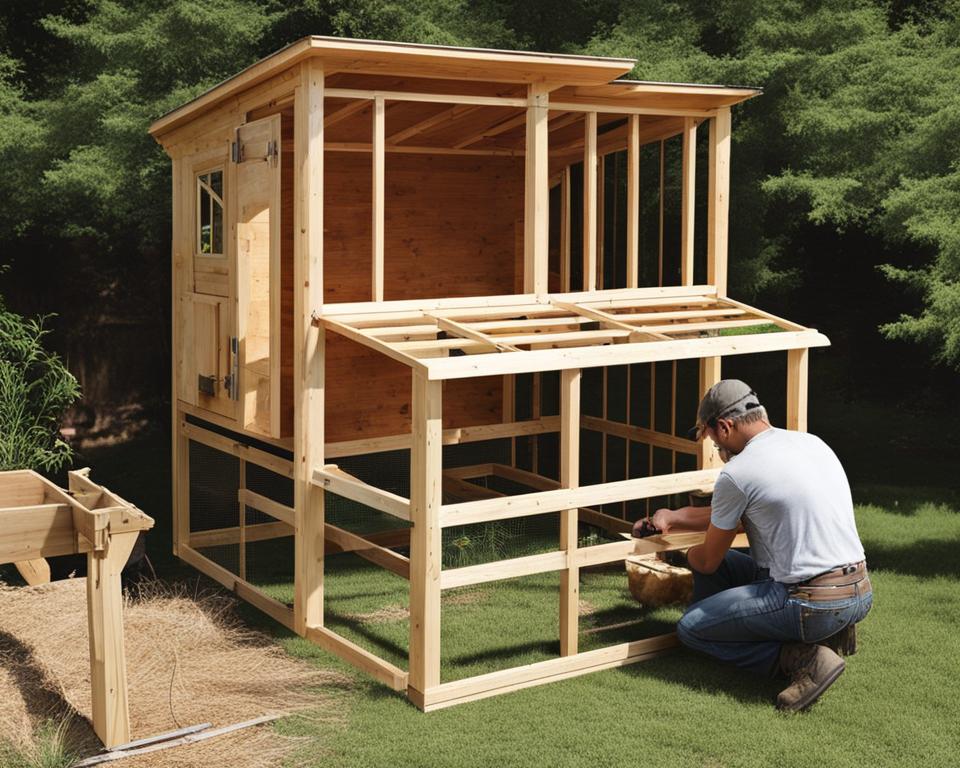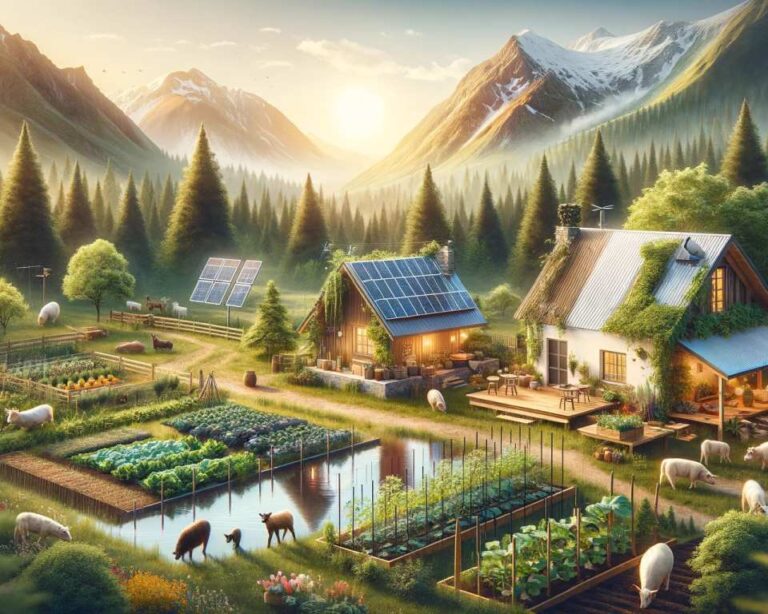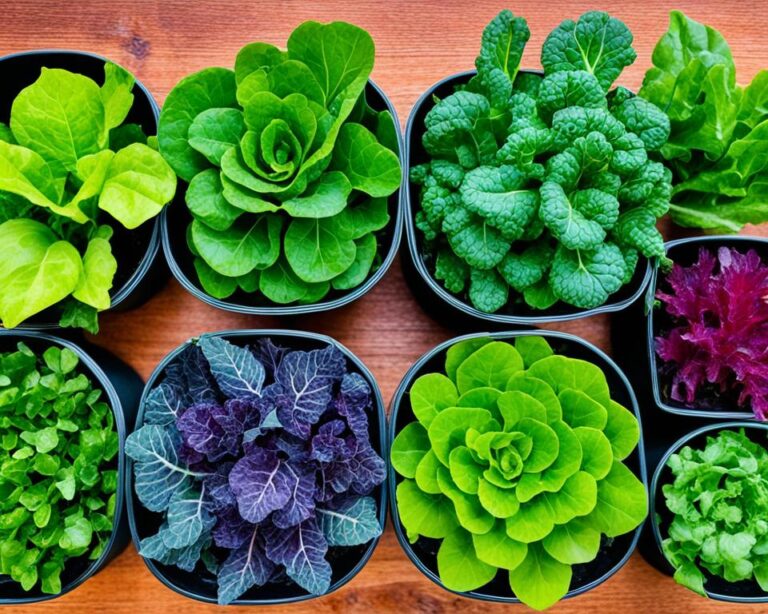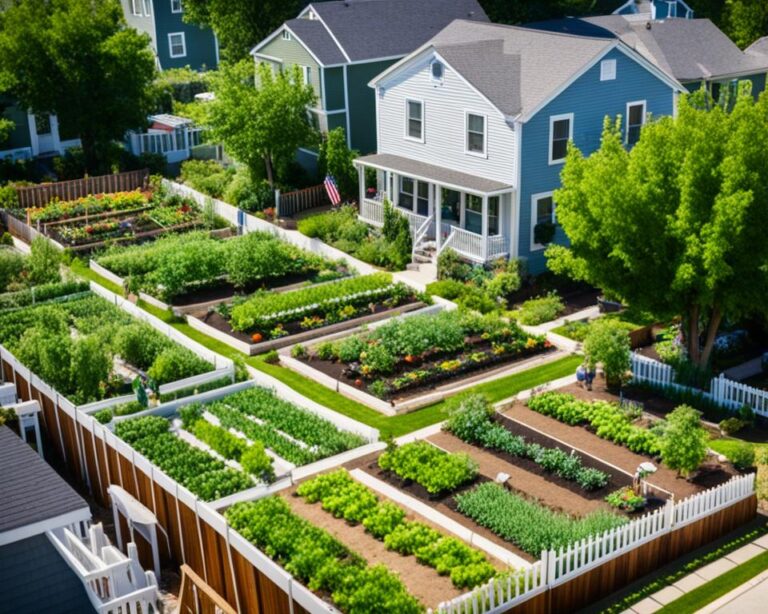Homesteading How-Tos: Essential Guides and Resources
Starting a homestead requires knowledge, resources, and practical skills. In this article, we will provide you with essential guides and resources to help you navigate the world of homesteading. From homesteading tips for beginners to sustainable living practices, we have everything you need to get started on your homesteading journey.
Whether you dream of self-sufficiency, off-grid living, or backyard farming, our comprehensive collection of homesteading projects and guides will equip you with the necessary skills and knowledge.
Discover the secrets of successful organic gardening, learn how to raise livestock on your homestead, and explore ways to create a sustainable lifestyle that benefits both you and the environment.
The Best Homesteading Books for Practical Guidance
Books are an excellent resource for learning homesteading skills and gaining practical guidance. Whether you’re a beginner or an experienced homesteader, these highly recommended books cover a wide range of topics to help you on your homesteading journey. From self-reliance to raising animals and preserving food, these books provide valuable insights and step-by-step instructions to create a self-sufficient and sustainable homestead.
- John Seymour’s “The Self-Sufficient Life and How to Live It”
A classic in the homesteading world, this book covers various aspects of self-reliance, from growing your own food to raising animals and building renewable energy systems. Seymour’s practical advice and illustrations make this a must-have guide for any homesteader. - Gail Damerow’s “Storey’s Guide to Raising Chickens”
For those interested in raising backyard chickens, this comprehensive guide covers everything from choosing the right breed to coop construction and chicken health care. Damerow’s expertise and attention to detail make this book an essential resource. - Gene Logsdon’s “The Contrary Farmer”
This thought-provoking book challenges traditional farming practices and offers alternative methods for small-scale farming and living. Logsdon’s witty and insightful writing style makes this an engaging read for those seeking a different approach to homesteading. - Carla Emery’s “The Encyclopedia of Country Living”
With over 900 pages of information, this comprehensive guide covers a wide range of homesteading topics, including gardening, animal husbandry, food preservation, and off-grid living. Emery’s book is a valuable reference for all homesteaders, providing guidance for nearly every aspect of self-sufficient living. - Joel Salatin’s “You Can Farm”
Salatin’s book is a practical guide for those interested in starting a small-scale farm or expanding their homestead. He shares his experiences and provides valuable insights into farm business planning, marketing, and sustainable farming practices. Salatin’s expertise and inspiring stories make this a must-read for aspiring homesteaders.
“Homesteading books offer a wealth of knowledge and inspiration for creating a self-sufficient lifestyle. From tried-and-true methods to innovative techniques, these books will empower you to embark on your homesteading journey with confidence.”
These homesteading books are just a starting point for building your homesteading library. As you delve deeper into the world of self-reliance and sustainable living, you’ll discover many more valuable resources to enhance your homesteading skills.
Homesteading E-Books and Courses for Digital Learning
If you prefer digital resources, there are plenty of e-books and online courses available that cover various aspects of homesteading. These resources offer convenience and accessibility, allowing you to learn at your own pace.
Homesteading E-Books:
- Homesteading 101: A Comprehensive Guide to Starting Your Self-Sufficient Journey
- The Ultimate Backyard Farming Manual: From Garden to Livestock, Everything You Need to Know
- Off-Grid Living: Harnessing Alternative Energy for a Sustainable Homestead
Homesteading Courses:
- Self-Sufficiency 101: Mastering the Art of Homesteading
- Financial Management for Homesteaders: Building a Stable and Sustainable Budget
- Land Selection: Finding the Perfect Property for Your Homestead
Whether you want to learn how to start a homestead from scratch, manage your finances effectively, or choose the right piece of land for your dream homestead, these e-books and courses provide valuable information and guidance.
With the digital nature of these resources, you can access them anytime, anywhere, using your favorite device. Whether you’re on your computer, tablet, or smartphone, you can dive into the world of homesteading and gain the knowledge you need to create a self-sufficient and sustainable lifestyle.
So, why wait? Start your digital homesteading journey today with these valuable e-books and courses!
“Digital resources offer convenience and accessibility, allowing you to learn at your own pace.”

Planning and Goal-Setting for Your Homestead
Before embarking on your homesteading journey, it is essential to have a well-defined plan and set realistic goals. Planning and goal-setting will provide you with a clear direction and help you make informed decisions along the way. In this section, we will guide you through the process of creating a strategic plan for your homestead, considering factors like self-sufficiency, sustainable living practices, priorities, and financial considerations.
Setting Homesteading Goals
Goal-setting is a crucial step in establishing your homestead. Start by identifying your priorities and long-term objectives. This could include achieving self-sufficiency in food production, reducing your carbon footprint, or creating a sustainable off-grid lifestyle. Make sure your goals are specific, measurable, attainable, relevant, and time-bound (SMART).
- Example: Plant a vegetable garden and grow 80% of our family’s produce within one year.
- Example: Become energy independent by installing solar panels and implementing energy-efficient systems in the next two years.
Considerations for Sustainable Living
Sustainability is at the core of the homesteading lifestyle. Consider your impact on the environment and how you can live more sustainably. This may involve practices such as composting, rainwater harvesting, using renewable energy sources, or implementing permaculture principles on your land. Strive for a harmonious relationship with nature and make choices that support the long-term health of your homestead.
Financial Considerations
Homesteading involves financial considerations that need to be carefully planned for. Determine your budget for acquiring land, building infrastructure, purchasing equipment, and maintaining your homestead. Consider the costs of ongoing maintenance, living expenses, and emergency funds. Explore strategies for generating income from your homestead, such as selling surplus produce, handmade products, or offering workshops or classes.
Developing a Homesteading Timeline
A timeline is a valuable tool to track your progress and ensure you stay on track with your homesteading goals. Break down your plan into smaller milestones and assign realistic deadlines to each stage. This will help you prioritize tasks, manage resources effectively, and stay motivated.
Quote: “By setting clear goals and developing a comprehensive plan, you lay a solid foundation for your homesteading journey. It enables you to make purposeful decisions and navigate potential challenges with confidence.” – Sarah Anderson, Homesteading Expert
Remember that planning and goal-setting are ongoing processes. As you gain experience and adapt to the needs of your homestead, your goals may evolve. Regularly review and revise your plan to reflect your changing priorities and aspirations.
Creating a Permaculture Homestead for Sustainable Living
In today’s world, where environmental concerns are at the forefront, many individuals are seeking ways to live in harmony with nature while ensuring self-sufficiency. One approach that has gained significant attention is permaculture homesteading. By adopting the principles of permaculture, individuals can create a sustainable and regenerative homestead that nurtures biodiversity while efficiently managing natural resources.
The Concept of Permaculture Homesteading
In permaculture homesteading, the guiding principle is to design and maintain an ecosystem that mimics the patterns and resilience of natural systems. By observing and working with nature, permaculturists aim to create a productive and sustainable environment that requires minimal external inputs. This approach goes beyond organic gardening or sustainable living practices, as it encompasses holistic design principles that encompass all aspects of the homestead ecosystem.
At the core of permaculture homesteading is regenerative agriculture, which focuses on enriching the soil, conserving water, and promoting biodiversity. By implementing techniques such as companion planting, agroforestry, and rotational grazing, permaculturists create a harmonious balance between human needs and the natural world.
The Benefits of Permaculture Homesteading
Permaculture homesteading offers numerous benefits for individuals and the environment. By adopting regenerative agricultural practices, such as building healthy soils and utilizing natural fertilizers, permaculturists can enhance the fertility and productivity of their land without depleting natural resources.
Biodiversity is also a key focus of permaculture homesteading. By creating diverse habitats and incorporating a variety of plants and animals into the ecosystem, permaculturists promote the resilience and balance of the homestead. This not only benefits the environment but also enhances the overall productivity of the system.
In addition to environmental benefits, permaculture homesteading contributes to sustainable living. By producing a significant portion of their food and resources on-site, individuals reduce their reliance on external sources and create a more self-sufficient lifestyle. This can lead to increased food security, financial savings, and a deeper connection to the land.
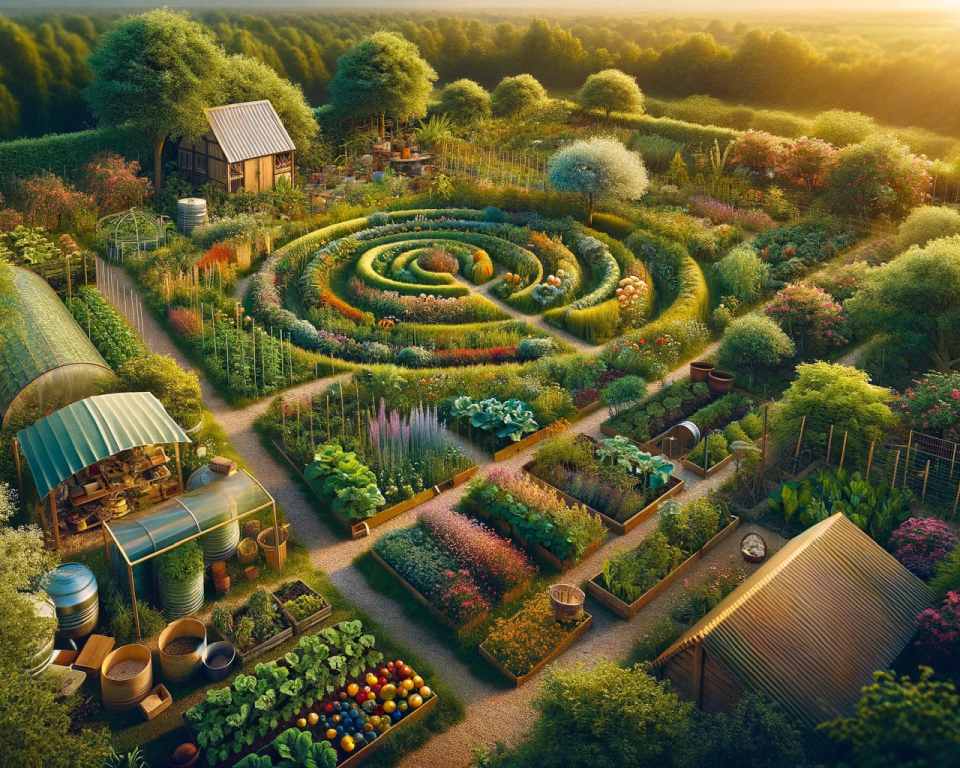
Natural Resource Management in Permaculture Homesteading
Effective natural resource management is a cornerstone of permaculture homesteading. Permaculturists prioritize water conservation and management, utilizing techniques such as rainwater harvesting, swales, and greywater systems. By carefully managing water resources, permaculture homesteads can thrive even in arid regions while minimizing their impact on local water sources.
Energy efficiency and renewable energy systems are also integral to permaculture homesteading. By incorporating solar panels, wind turbines, or other renewable energy sources, individuals can reduce their reliance on non-renewable energy and promote a sustainable energy future.
In permaculture homesteading, we foster a deep and reciprocal relationship with the land. By implementing regenerative agricultural practices, enhancing biodiversity, and managing natural resources effectively, we create a sustainable and self-sufficient lifestyle that benefits both ourselves and the environment.
By creating a permaculture homestead, individuals can pioneer a path towards sustainable living and regenerative agriculture. Through careful observation, thoughtful design, and responsible management, permaculture homesteading offers a viable blueprint for a more harmonious and resilient future.
Finding the Right Land for Your Homestead
Finding the perfect piece of land is a crucial step in ensuring the success of your homestead. The land you choose will determine the feasibility of your homesteading goals and the quality of your self-sufficient lifestyle. In this section, we will guide you through the process of land selection, highlighting essential factors to consider.
One of the first considerations when looking for homesteading land is soil quality. Good soil is the foundation of a productive homestead, allowing you to grow healthy crops and raise animals. Conduct soil tests to assess its composition, fertility, and drainage capabilities. This will help you determine if the land is suitable for your agricultural and gardening needs.
Water access is another crucial factor to consider. Without a reliable water source, sustaining your homestead will be challenging. Evaluate the availability and quality of water on the property. Consider natural water sources like rivers, springs, or wells, and assess their proximity to the potential building site and farmland.
Property considerations play a significant role in choosing the right land for your homestead. Look for a property that provides enough acreage to accommodate your plans and activities. Evaluate the topography of the land, considering factors such as slopes, elevation changes, and flood zones. These factors can impact the usability and productivity of your homestead.
Additionally, consider the location of the land in relation to essential amenities and services. Evaluate the proximity to schools, healthcare facilities, shopping centers, and other necessary infrastructure. Access to emergency services and a supportive community can enhance your overall homesteading experience and provide additional security.
Remember to consider any legal and zoning restrictions that may affect your homesteading plans. Check with local authorities about regulations related to land use, building codes, and agricultural practices. Understanding these restrictions in advance will help you avoid any complications down the road.
Choosing the right land for your homestead is much more than just buying a piece of property. It requires careful consideration of various factors such as soil quality, water access, property considerations, and legal restrictions. Taking the time to assess these factors will help you find the perfect land for your homesteading journey.
Common Homesteading Activities to Get Started
Homesteading activities are at the core of self-sufficiency and sustainable living. Engaging in these activities allows us to take control of our food production and daily needs. Whether you have a small backyard or a larger piece of land, there are various homesteading activities you can start with. In this section, we will explore some common homesteading activities that will lay the foundation for your successful homestead.
1. Vegetable Gardening
One of the most popular homesteading activities is vegetable gardening. By growing your own vegetables, you can have a fresh and organic food supply right at your doorstep. Start by preparing the soil, selecting suitable vegetables for your climate, and maintaining a regular watering and fertilizing routine. Vegetable gardening not only provides nutritious food but also allows you to connect with nature and enjoy the therapeutic benefits of gardening.
2. Livestock Raising
Raising livestock is another essential aspect of homesteading. Depending on the space available and your personal preferences, you can raise chickens, ducks, goats, rabbits, or even larger animals like cows or pigs. Livestock not only provides a source of meat, eggs, and dairy but also helps with natural fertilization and land management. However, it’s important to educate yourself about the specific needs and proper care of each animal before getting started.
3. Food Preservation
Preserving the abundance of your homestead harvest is crucial for year-round self-sufficiency. Food preservation methods such as canning, drying, fermenting, and freezing allow you to enjoy your garden-fresh produce even during the off-season. Learn the techniques and safety measures for each preservation method to ensure the quality and longevity of your preserved foods.
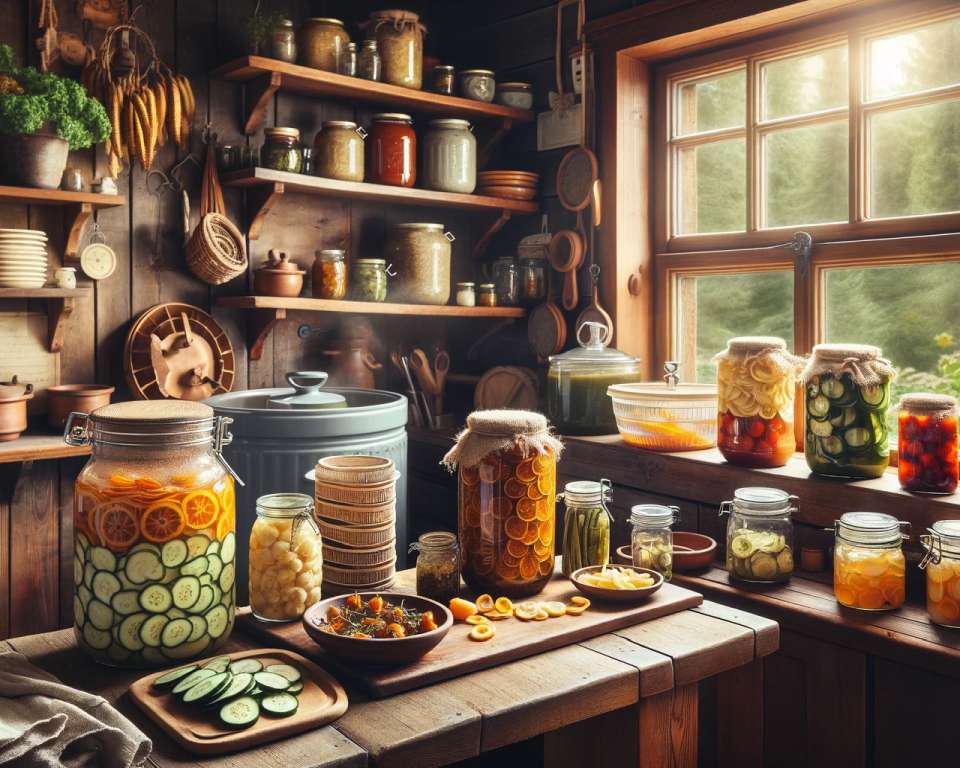
4. DIY Projects
Homesteading often involves a do-it-yourself (DIY) approach, where you utilize your skills and creativity to build or repurpose various structures and tools. From constructing chicken coops and raised garden beds to building rainwater collection systems or solar panels, DIY projects not only save money but also promote self-reliance and resourcefulness.
Remember, homesteading is a journey, and it’s important to start with activities that align with your interests and resources. As you gain experience and confidence, you can gradually expand and diversify your homesteading endeavors.
Why Should You Start a Homestead?
Starting a homestead offers a multitude of benefits that can positively impact your life and the environment. By embarking on a homesteading journey, you have the opportunity to achieve self-sufficiency, reduce your environmental impact, forge a deeper connection with nature, and ensure food security for yourself and your family. Let’s explore these advantages in more detail.
1. Homesteading Benefits and Self-Sufficiency
Homesteading provides you with the means to become self-sufficient, relying less on external sources for your daily needs. By growing your own food, raising livestock, and creating sustainable systems, you gain greater control over your lifestyle. You can cultivate a sense of independence and resilience, knowing that you have the skills and resources to sustain yourself and your loved ones.
2. Environmental Impact and Connection to Nature
Homesteading allows you to live in harmony with the natural world, fostering a deep connection to the environment. By implementing sustainable practices such as organic gardening, permaculture, and regenerative agriculture, you contribute to the preservation of biodiversity, soil health, and overall ecological balance. This connection to nature not only benefits the planet but also brings a sense of fulfillment and peace.
3. Food Security and Peace of Mind
In today’s world, ensuring food security is more important than ever. By producing your own food through homesteading, you can safeguard against food shortages, price fluctuations, and reliance on industrialized agriculture. Having a sustainable food source provides peace of mind, knowing that you can nourish yourself and your family with fresh, nutrient-rich food, regardless of external circumstances.
Homesteading offers a range of advantages for individuals and families – from achieving self-sufficiency and reducing environmental impact to experiencing a deeper connection to nature and ensuring food security.

By starting a homestead, you become part of a movement that prioritizes self-reliance, sustainability, and resilience. Through responsible land stewardship, conscious consumption, and a commitment to living in harmony with nature, you can create a fulfilling and purposeful lifestyle that benefits both yourself and the planet.
The History and Origins of Homesteading
Homesteading has a rich history that can be traced back to the 19th century, playing a significant role in North America. Understanding the origins of homesteading provides valuable insights into the values and principles that guide the modern homesteading movement.
“Homesteading has deep roots in the United States, originating from the Homestead Act of 1862. This landmark legislation aimed to promote land ownership and self-sufficiency, offering aspiring homesteaders the opportunity to claim and cultivate public land.”
The Homestead Act enabled thousands of individuals and families to acquire land, ushering in a new era of land ownership and agricultural development. Under the act’s provisions, homesteaders could claim up to 160 acres of public land by improving and cultivating it for a specified period.
Government programs played a crucial role in supporting homesteaders and providing them with the resources they needed to establish successful homesteads. These programs included assistance with land acquisition, agricultural education, and access to essential supplies and equipment.
Homesteading became a way of life for many, as individuals and families embraced self-sufficiency, agricultural practices, and sustainable living. It was a means to escape crowded urban areas and seek a simpler, more independent lifestyle.
Today, the spirit of homesteading continues to thrive, albeit in different forms. While the Homestead Act is no longer in effect, the principles of self-reliance, sustainable living, and land stewardship remain at the core of the modern homesteading movement.
The Significance of Land Ownership
Land ownership was a key objective of the homesteading movement. It allowed individuals and families to establish their own self-sufficient homesteads and cultivate the land for sustenance and livelihoods.
The acquisition of land through homesteading provided a sense of ownership and security, empowering individuals to shape their own destinies and build prosperous futures. It fostered a deep connection to the land and a commitment to sustainable land management practices.
Additionally, land ownership offered opportunities for economic growth and stability, as homesteaders could sell surplus produce or establish small-scale businesses on their properties.
The Role of Government Programs
Government programs played a pivotal role in the success of the homesteading movement. The Homestead Act was just one of several government initiatives aimed at promoting land ownership, settlement, and self-sufficiency.
Through these programs, the government provided support and resources to aspiring homesteaders, offering opportunities for individuals and families to establish themselves on the land and pursue a sustainable lifestyle.
Government support included land grants, access to farming equipment and supplies, educational resources, and technical assistance. These initiatives were instrumental in enabling homesteaders to overcome the challenges of starting a new life on undeveloped land.
Understanding the history and origins of homesteading allows us to appreciate the resilience and determination of those who came before us. It reminds us of the values and principles that continue to shape the modern homesteading movement, inspiring individuals and families to forge their paths towards self-sufficiency, sustainable living, and a closer connection with the land.

Can You Get Free Land Through Homesteading?
While many people believe that homesteading offers the opportunity to obtain free land, the reality is more complex. In this section, we will delve into the concept of free land for homesteading and explore government initiatives and land grants that can assist in acquiring land. Additionally, we will discuss the eligibility criteria and important considerations for individuals seeking free land for their homesteading journey. Understanding the possibilities and limitations of obtaining free land will enable you to make informed decisions when embarking on your homesteading adventure.
Conclusion on Homesteading Guides and Resources
Homesteading is a journey that requires continuous learning and adaptation. Throughout this article, we have provided essential guides and resources to help you navigate the world of homesteading. From practical books and digital courses to planning and goal-setting tips, we have covered a wide range of topics to support your homesteading journey.
By utilizing these homesteading resources, you can gain knowledge and practical skills to create a self-sufficient and sustainable lifestyle. Whether you are a beginner or an experienced homesteader, ongoing learning is key to staying informed and adapting to new challenges.
Self-sufficiency and sustainable living practices are essential aspects of homesteading. By implementing these practices, you can reduce your environmental impact, enhance your connection to nature, and ensure food security for yourself and your family.
Remember, the homesteading journey is not just about the destination but also about the ongoing learning and personal growth it offers. Embrace the joy of acquiring new skills, expanding your knowledge, and connecting with like-minded individuals in the homesteading community.
With the wealth of homesteading guides and resources available, you have all the tools you need to embark on your homesteading journey. Make use of these valuable resources, stay curious, and enjoy the rewarding experience of creating a fulfilling and sustainable lifestyle.
Frequently Asked Questions About Homesteading
Curious about homesteading? We’ve got you covered with answers to the most common homesteading questions. Whether you’re a beginner looking for practical tips or an experienced homesteader seeking expert advice, these FAQs will provide valuable insights to help you on your homesteading journey.
1. What are some practical tips for beginners?
If you’re just starting out on your homesteading journey, here are a few practical tips to get you started: Begin with small projects like growing herbs or starting a compost pile, research and educate yourself about sustainable living practices, join local homesteading communities for support and advice, and start budgeting and planning your resources wisely.
2. How can I ensure a successful garden?
Creating and maintaining a successful garden is essential to a thriving homestead. Some tips to ensure a fruitful harvest include selecting the right plants for your climate, understanding your soil and improving its quality, providing adequate water, sunlight, and nutrients, implementing pest control measures, and practicing proper crop rotation.
3. What are some key considerations for raising livestock?
Raising livestock is a significant aspect of homesteading. Some key considerations to keep in mind include providing suitable shelter, ensuring access to fresh water and nutritious feed, practicing proper animal health care and vaccinations, maintaining clean and sanitary living conditions, and considering the time and effort required for daily animal care.
4. How can I embrace sustainable living practices on my homestead?
Sustainable living is at the core of homesteading. Here are a few ways to embrace sustainable practices on your homestead: practice organic gardening and utilize permaculture principles, conserve water by implementing rainwater harvesting systems and using efficient irrigation methods, reduce energy consumption by utilizing renewable energy sources, and minimize waste through composting and recycling.
These FAQs provide a starting point for your homesteading journey, but remember that each homestead is unique, and there is always more to learn. Explore further resources, seek advice from experts, and enjoy the rewarding experience of creating a self-sufficient and sustainable lifestyle.
FAQ
What are some essential homesteading guides and resources for beginners?
Some essential homesteading guides and resources for beginners include books, e-books, online courses, and practical guidance on topics such as self-reliance, raising animals, preserving food, and sustainable living practices.
What are some highly recommended homesteading books?
Some highly recommended homesteading books include guides on self-sufficiency, raising animals, alternative energy options, and preserving food. These books offer valuable insights and step-by-step instructions for creating a self-sufficient and sustainable homestead.
Are there e-books and online courses available for homesteading?
Yes, there are plenty of e-books and online courses available that cover various aspects of homesteading. These resources offer convenience and accessibility, allowing you to learn at your own pace on topics like starting a homestead from scratch, financial management, and land selection.
How can I plan and set goals for my homestead?
To plan and set goals for your homestead, consider factors such as self-sufficiency, sustainable living practices, priorities, and financial considerations. By having a well-thought-out plan, you can approach your homesteading journey with clarity and purpose.
What is permaculture homesteading, and how can it help me achieve sustainable living?
Permaculture homesteading is a design approach that focuses on creating sustainable and self-sufficient systems. It incorporates regenerative agriculture, biodiversity, and natural resource management. By adopting permaculture principles, you can achieve a more sustainable and eco-friendly homestead.
What should I consider when selecting land for my homestead?
When selecting land for your homestead, consider factors such as soil quality, water access, and property considerations. These factors will play a significant role in the success and sustainability of your homestead.
What are some common homesteading activities I can start with?
Some common homesteading activities you can start with include vegetable gardening, raising livestock, food preservation, and DIY projects. These activities provide a foundation for self-sufficiency and allow you to take control of your food production and daily needs.
What are the benefits of starting a homestead?
There are numerous benefits to starting a homestead, including achieving self-sufficiency, reducing your environmental impact, experiencing a deeper connection to nature, and ensuring food security for you and your family.
What is the history and significance of homesteading?
Homesteading has a rich history that dates back to the 19th century. It gained significance in North America through the Homestead Act and other government programs that promoted land ownership and self-sufficiency.
Can I get free land through homesteading?
While it is commonly believed that you can get free land through homesteading, the reality is more complex. There have been government initiatives and land grants in the past, but eligibility criteria and limitations apply. It is important to research and understand the possibilities and limitations of free land for homesteading.
How can I continue learning and adapting on my homesteading journey?
Homesteading is a journey that requires continuous learning and adaptation. By utilizing the available guides and resources, practicing ongoing self-sufficiency and sustainable living, you can continually improve and create a fulfilling and sustainable lifestyle.
What are some frequently asked questions about homesteading?
Some frequently asked questions about homesteading include practical tips for beginners, expert advice on gardening, livestock, and sustainable living practices. These FAQs provide valuable insights for anyone considering or already involved in homesteading.

